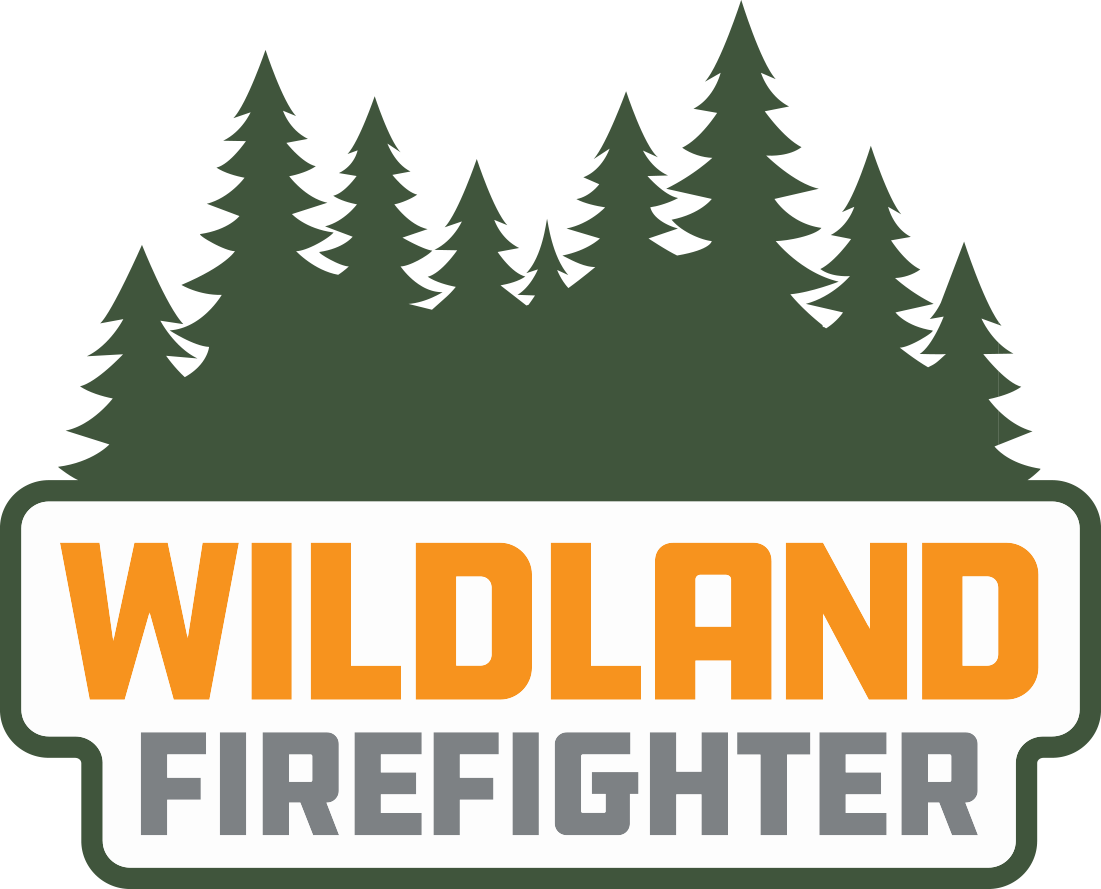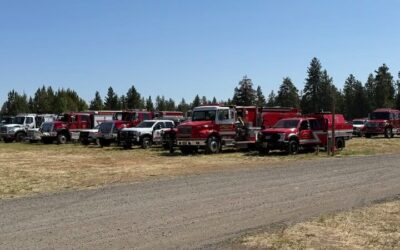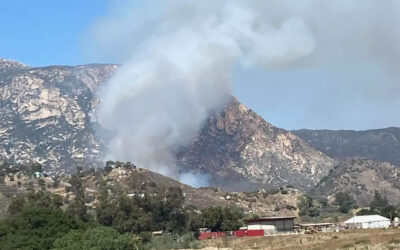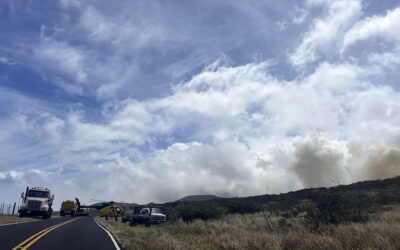May 8—CAMP CAMREC, Chelan COUNTY — The last fire to burn this forest was started by drip torches. Fingers of flame ignited the underbrush last fall, clearing fuels that could supercharge a wildfire.
In a tour of the burn area last week, grasses and balsamroot were sprouting, an example of a forest treated to withstand the types of blazes that could threaten lives and property.
Funding for more work like this, paid by the state, is now in jeopardy after lawmakers tussled with a four-year, $16 billion budget shortfall.
Their proposed budget now under consideration by Gov. Bob Ferguson cut in half the $125 million previously promised per biennium for wildfire response and preparedness.
The potential cut in funding for wildfire prevention work could lead to larger and riskier fires, said state Lands Commissioner Dave Upthegrove.
He says the state is prepared to respond to fires this season, no matter what happens with the budget. But without longer-term investments in prevention, Upthegrove continued, the state will end up paying more for response and recovery.
Hotter, drier summers fueled by human-caused climate change coupled with more than a century of fire suppression primed the West’s forests for an era of megafires. The Legislature’s earlier commitment was intended to help those most at risk get ahead of it.
Now, the state’s grants to communities, property owners and local fire districts to buy equipment and prepare for fire are at risk. While the agency is still working to understand the budget proposal, an earlier analysis identified a cut of about 120 of 550 seasonal firefighters and two single-engine air tankers.
“I think the data is pretty clear that we’ve done better than our neighbors in part because of this funding that’s allowed us to be prepared,” said Pat Sullivan, the director of governmental and external affairs at the Department of Natural Resources. “It really is a public safety issue.”
If Ferguson approves the budget, the agency plans to request that funding be restored in next year’s supplemental budget, but doesn’t expect the state’s financial situation to be any better.
A growing threat
For years, the state didn’t have a dedicated source of wildfire funding.
In 2015, Washington saw its worst fire season, killing three firefighters and damaging hundreds of homes.
The Labor Day fires of 2020 would become one of the worst two-day stretches of wildfire in state history. They destroyed 121 homes in the Malden area of Eastern Washington and at least 62 elsewhere.
State lawmakers worked with DNR to develop an antidote to the growing threat.
They crafted a plan, House Bill 1168, to invest $125 million in each budget biennium split among three buckets: forest restoration, wildfire response and community resilience.
“If we can suppress the fire, it’s cheaper,” said Rep. Tom Dent, a Republican from Moses Lake, in a recent interview. “If we let a fire get away from us, and we can’t stop it … then that’s when it gets really expensive. Not to mention the loss to the state, our people.”
Dent co-sponsored the 2021 legislation, and wrote a letter urging Ferguson to maintain the funding for fire suppression amid the state’s budget crunch this year.
In three of the last four fire seasons, the state has kept 95% of wildfires under 10 acres.
Some authors of the bill and state officials attribute that success in part to the work supported by House Bill 1168: the thinning, burning and preparation in communities before fire arrives and the ability to respond to fires quickly.
The agency has access to about 40 aircraft to respond to fires during peak season; they’ve hired more full-time firefighters, helped more than 8,000 landowners prepare for fire and treated thousands of acres.
Leavenworth and the surrounding area have been identified as having some of the highest risk for wildfire in the Pacific Northwest.
One of the best ways to help protect against catastrophic fire is restoring beneficial fire, a practice of intentional burning led by Indigenous people for thousands of years.
Westward expansion, non-Native settlement and Indian removal policies disrupted this coexistence with fire. Fire-resilient forests were converted to dense, fire-prone forests.
Since 2015 the Colville reservation has seen more than half of its 1.4 million acres burn in wildfires.
Indigenous people have always known fire kept these landscapes healthy, but regulation and limited funding and staffing still stand in the way of restoring those healthy, fire-resilient ecosystems, said Cody Desautel, the executive director of the Confederated Tribes of the Colville Reservation. More recently, the tribes have seen assistance from state crews to increase their staffing and hit their goals in short burn windows.
The state is aiming to get to 100,000 acres burned across all lands each year — up from the roughly 30,000 acres burned on average. With technical support and funding from the state, communities have begun to expand this work.
Fighting fire with fire
During the tour of the burn area last week at Camp CAMREC, camp director Brisa Peacock explained how caring for the 240 acres of forest making up the Mennonite camp off Chumstick Highway has, in recent years, become a piece of community wildfire resilience.
The 9-acre burn last fall was one of nine in the region funded with $50,000 from the state’s wildfire prevention spending. It was organized by the Cascadia Prescribed Burn Association, a community group educating, training and carrying out prescribed fires.
Colin Sternagel founded the association to help his community prepare for wildfire.
The Chumstick is steep and nasty, one of the hardest places to fight fire in the area, said Nolan Brewer, a forest resilience coordinator with DNR. Grassroots groups like the Cascadia Prescribed Burn Association are reducing fuels for fire in some of the highest-priority landscapes in the state, Brewer said.
“The goal and the intent of when we passed HB 1168 was this wonderful balance of the work we needed to do to build up the agency efforts,” said Skippy Shaw, the Washington government relations director for The Nature Conservancy, “but also recognizing how local communities really help sustain long-term progress on forest health and wildfire.”
© 2025 The Seattle Times. Visit www.seattletimes.com. Distributed by Tribune Content Agency, LLC.




